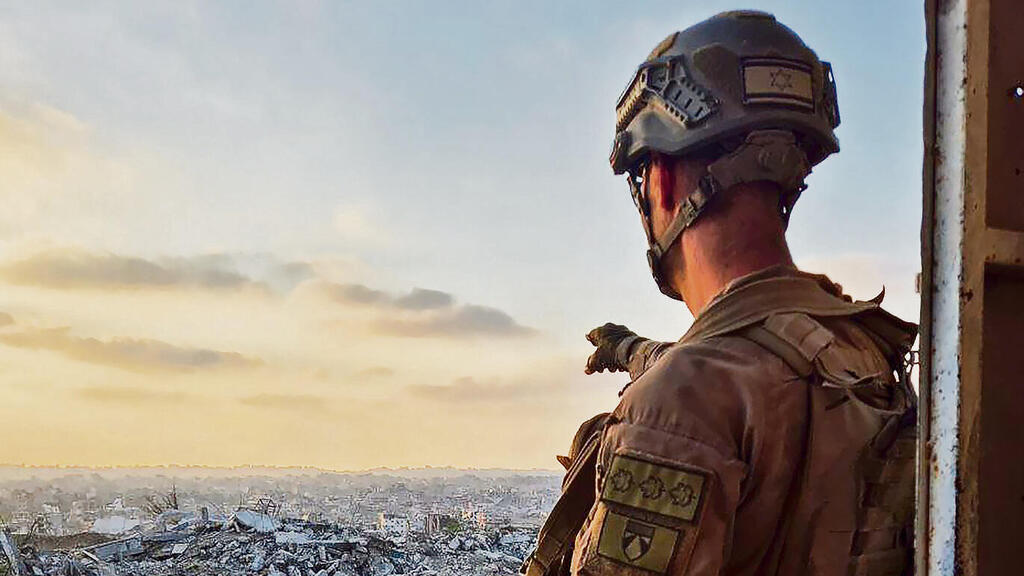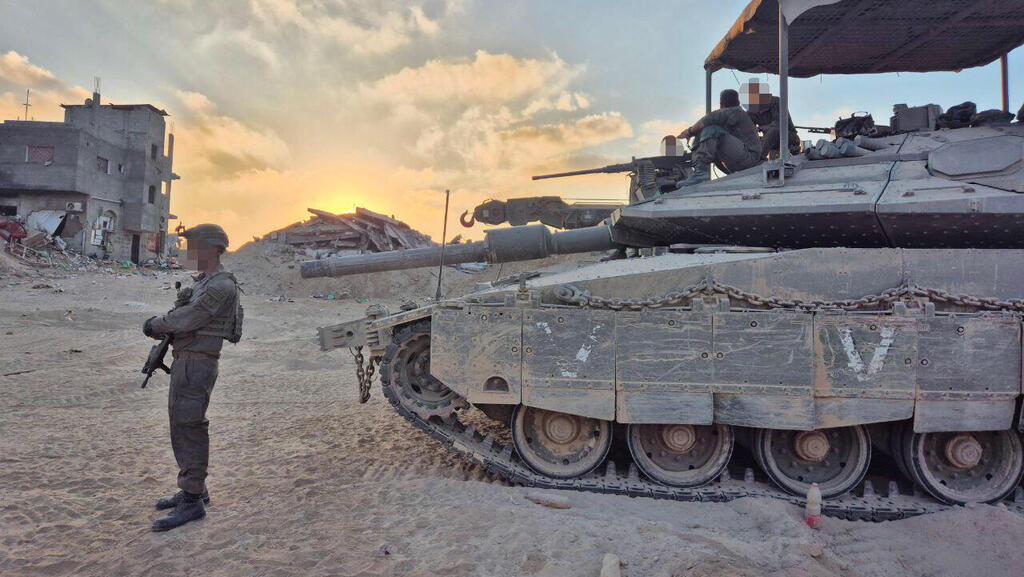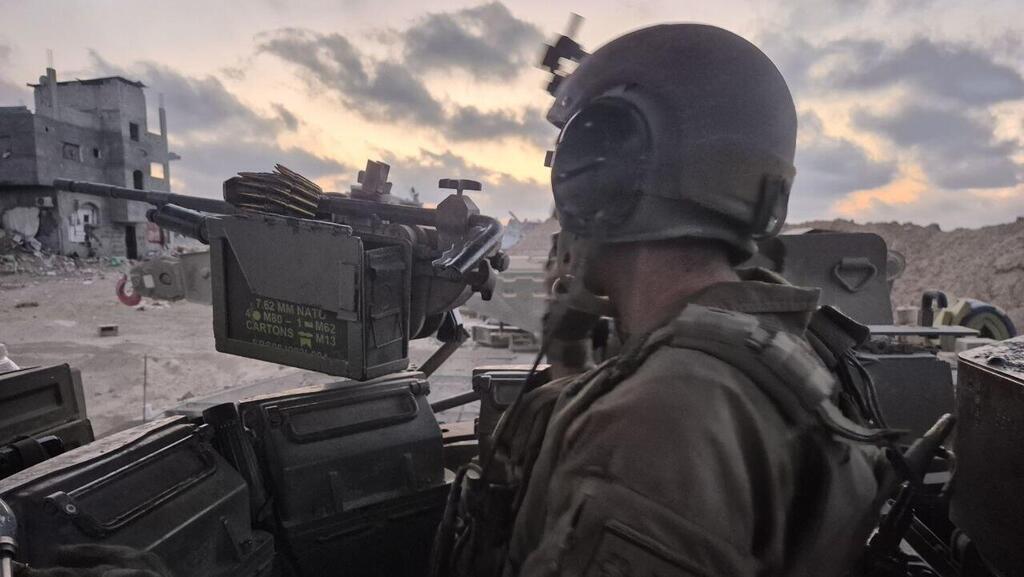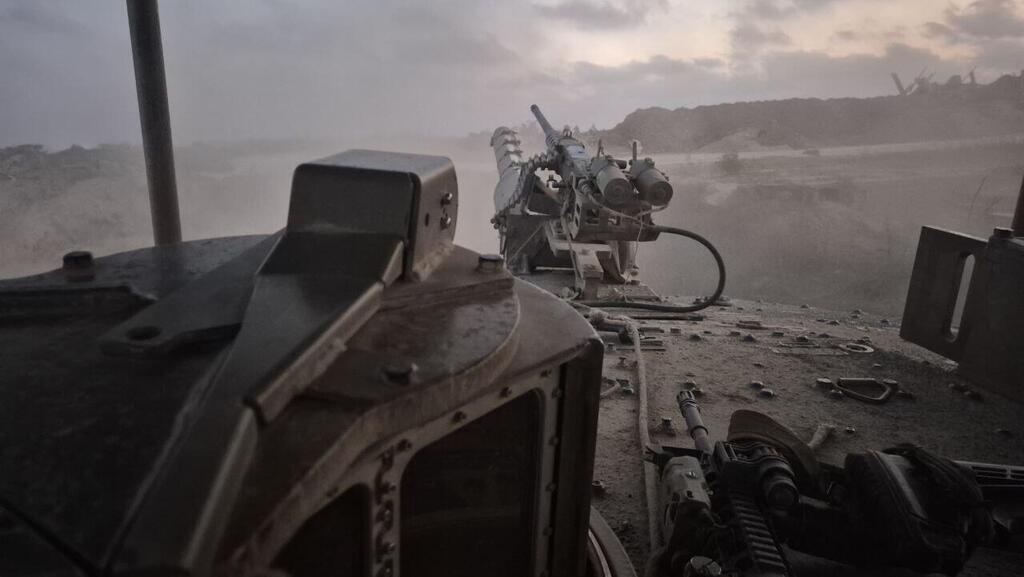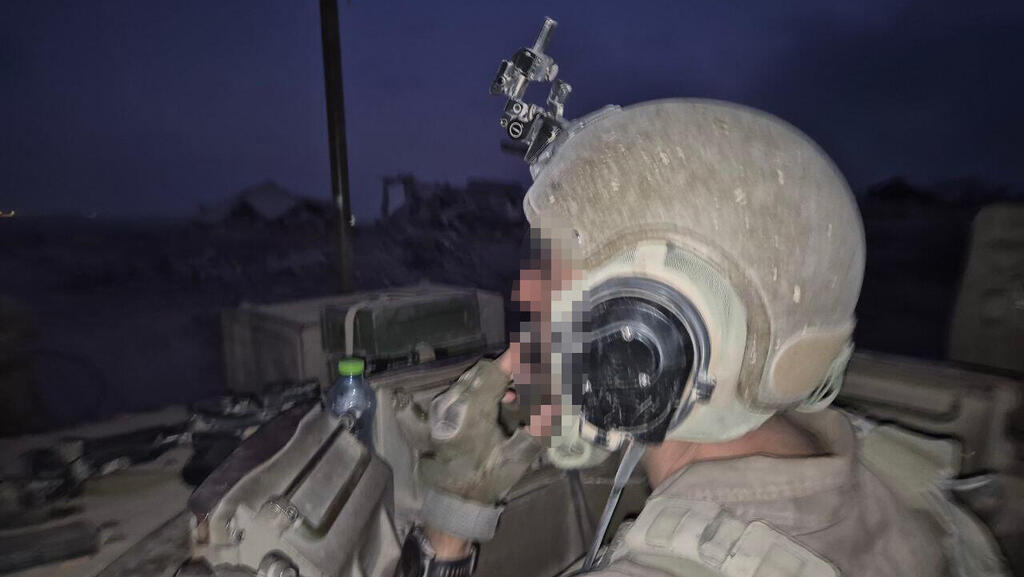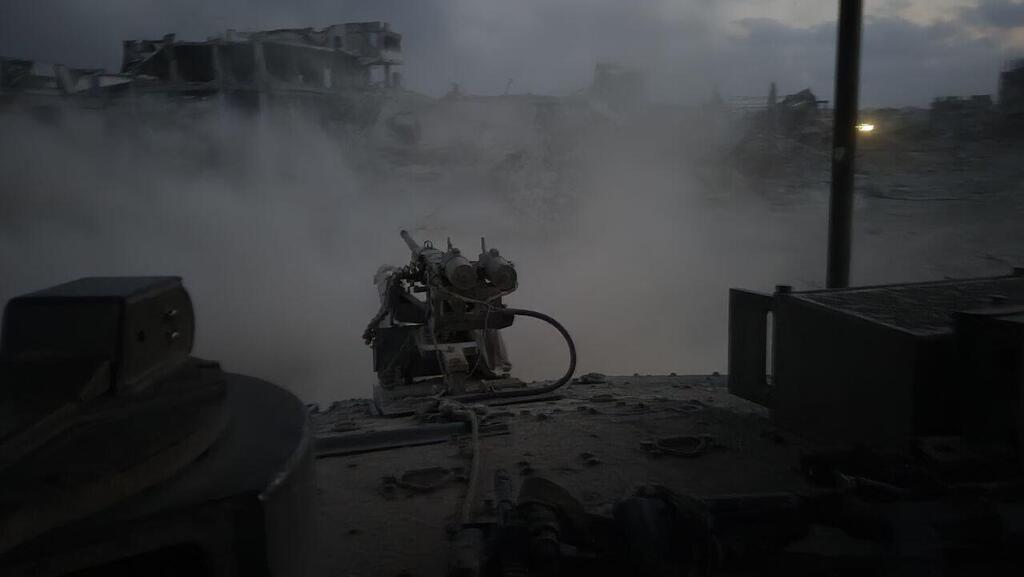His entire military career had prepared him to lead an active-duty Armored Corps brigade, but not like this—not after losing one of his closest friends in a bloody campaign. Stepping into Daxa’s shoes, M. describes him as a revered commander, a fierce soldier and an exceptional person.
“I arrived at the brigade headquarters in Jabaliya,” he recalls, “gathered the battalion commanders and told them: First, I’ve taken command—there’s no vacuum. Second, I need your situation reports and recommendations. And one more thing: I knew Ehsan, loved and respected him. Every decision he made before his death, I stand by. We lost Ehsan but this brigade is strong and won’t pause for a second. We’ll learn from this and push forward with full force.”
The 401st Brigade has barely stopped since October 7, except for a 10-day refresh leave earlier this year, fighting continuously in Gaza longer than any other unit, M. says proudly, sitting by his tank in a temporary outpost in Jabaliya, on the outskirts of Gaza City.
His brigade combat team includes the 401st’s organic 52nd Armored Battalion and 601st Engineering Battalion, alongside the Nahal Brigade’s 50th Battalion and Givati Brigade’s Shaked Battalion.
M. shares messages from Kfar Aza residents: one, a brigade veteran who lost a young son, thanked them with “hugs”; another, who lost parents and 64 community members, wrote, “You’ve given us hope to return home. Thanks for everything—we’ll meet for coffee on the tank.”
While the Lebanon operation lasted two months and the Iran war 12 days, the Gaza war has dragged on for 21 months. “Israel must understand why it’s so long,” M. says. “We’re fighting in a hostage environment, doing everything to avoid harming them. We’re in one of the densest settings, above and below ground.
“In a month of being here, we destroyed three kilometers (1.86 miles) of tunnels. Without that, Hamas would re-establish itself. The enemy shamelessly embeds among civilians, using them as human shields. Fighting in such a space takes time. Israel loves quick wins but some places don’t allow it.”
He recounts an incident illustrating Hamas’ tactics: Four suspicious men with a 10-year-old boy lifted a corrugated metal sheet, revealing a tunnel shaft. Three entered, retrieving weapons, while the fourth gave orders, keeping the boy close. “We debated attacking,” M. says.
“We waited for a chance to strike without harming the child. After 30 minutes, the squad leader stepped 50 meters (164 feet) aside for a phone call, with the boy. We took out the other three without hurting him. Clearly, the boy was instructed to stay close as a human shield.”
Col. M., a Modi’in resident, married to Michal with three children, enlisted in 2002, rising through the 188th Brigade’s 53rd Battalion from tank crewman to deputy company commander in the 2006 Second Lebanon War, later becoming a battalion commander.
Recently, the army has sent top armored officers to infantry roles, and M. pioneered as deputy commander of the Paratroopers Brigade, swapping his black beret for a red one for a year, then commanding the Jordan Valley Brigade.
On October 7, he was studying at Canada’s National Security College, returned to fight, completed his course in Toronto and was appointed deputy commander of the 162nd Division in June until Daxa’s death.
Daxa’s subordinates continue under M.’s command. Major A., the operations officer injured in the same incident, returned to combat after two weeks, now riding in M.’s tank. Lt. Col. Y., the former 52nd Battalion commander, severely wounded, is resuming service as a tactical command college team leader.
As darkness falls, a blood-red moon hangs in the sky and the tank kicks up dust clouds. Tracer rounds light the night. M. receives a radio update: five terrorists killed in an airstrike. “In a month here, we eliminated 180 terrorists from Jabaliya’s battalion,” he says. Since Operation Gideon’s Chariots began, 33 soldiers and civilians were killed in Gaza, mostly in the last month, with daily casualty announcements. People ask, 'When will it end?'
M. responds, “We’re in intense combat, advancing and engaging the enemy. Casualties show our forces are active 24/7. I assure the public we’re making immense efforts to achieve our mission while protecting our troops.”
After nearly two years, fighter fatigue is inevitable. M. counters it by rotating commanders to training roles or refreshing battalions. “It’s not easy,” he admits. “Some cope better, others struggle. Ultimately, the IDF needs more soldiers.” When asked where they’ll come from, he says: “We know where. No need to reinvent the wheel.”


